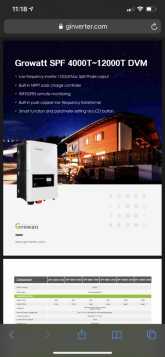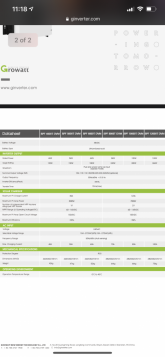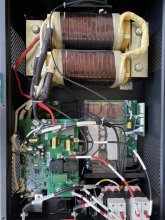For reference, I looked into this for a while prior to buying the sol-ark. They
will not send stuff to the USA because of their contracts with Sol-ark. If you ask for any technical documentation, they immediately say to go to sol-ark. I even tried using on of my vendors in China to buy them from Deye and then send to me and that route was not feasible.
_____________________________________
Update on my system - So as of yesterday, I'm finally up and running 100% how I would like. Some of the things to work through were the fact that in our off-grid setup, we have some unique systems that take advantage of power, when available. With the addition of the sol-ark, "Generator Peak Shaving" or also known as "Gen Support" on other systems, is a critical selling point for us due to the nature of our system and loads.
Essentially, we are spoiled and have a hot tub. When the generator is running, we have 9kw of power going to the sol-ark, and another 4kw of power going directly to the heating elements on the hot tub. In our previous configuration, all of the power consumed was via a 48vdc inverter and all battery charging was via a similar inverter/charger that only acted as a battery charger. This meant that if any loads on the property turned on, the batteries would buffer the difference, at the cost of ac-dc-ac conversion. The spa was transferred to the generator when it was running.
With the sol-ark, our loads now pass through to the generator. This means with our 13kw of known load from battery charging and spa heat now has additional potential load on top of it. Not good to avoid tripped breakers.
The programming of the sol-ark is very difficult for our strange situation. Essentially I set the sol-ark into "Power limited to Home" with the generator connected to the "GRID" input. Essentially the sol-ark is grid tied to the generator now, with the exception that the CTs will limit power from going backward into the generator. Now our generator panel has 14kw of power available for consumption, and if demand requires, can have an additional 8kw of power fed in from the sol-ark. Things like spa heating elements and electric clothes dryers can be fed on this panel so they only are able to be ran with the generator already running.






